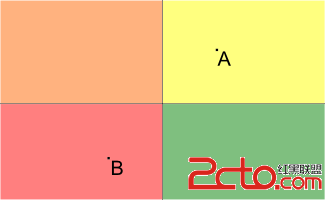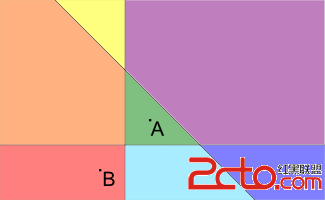A
水
A. Watching a movie time limit per test 1 second memory limit per test 256 megabytes input standard input output standard output
You have decided to watch the best moments of some movie. There are two buttons on your player:
Initially the movie is turned on in the player on the first minute, and you want to watch exactly n best moments of the movie, the i-th best moment starts at the li-th minute and ends at the ri-th minute (more formally, the i-th best moment consists of minutes: li, li + 1, ..., ri).
Determine, what is the minimum number of minutes of the movie you have to watch if you want to watch all the best moments?
InputThe first line contains two space-separated integers n, x (1 ≤ n ≤ 50, 1 ≤ x ≤ 105) — the number of the best moments of the movie and the value of x for the second button.
The following n lines contain the descriptions of the best moments of the movie, the i-th line of the description contains two integers separated by a space li, ri (1 ≤ li ≤ ri ≤ 105).
It is guaranteed that for all integers i from 2 to n the following condition holds: ri - 1 < li.
OutputOutput a single number — the answer to the problem.
Sample test(s) input2 3 5 6 10 12output
6input
1 1 1 100000output
100000Note
In the first sample, the player was initially standing on the first minute. As the minutes from the 1-st to the 4-th one don't contain interesting moments, we press the second button. Now we can not press the second button and skip 3 more minutes, because some of them contain interesting moments. Therefore, we watch the movie from the 4-th to the 6-th minute, after that the current time is 7. Similarly, we again skip 3 minutes and then watch from the 10-th to the 12-th minute of the movie. In total, we watch 6 minutes of the movie.
In the second sample, the movie is very interesting, so you'll have to watch all 100000 minutes of the movie.
#include#include #include #include #include #include #include #include using namespace std; struct { int s; int e; }p[55]; int n,x; int main() { while (scanf(%d %d, &n,&x) != EOF) { for (int i = 1; i <= n; i++) { scanf(%d %d,&p[i].s,&p[i].e); } int pos = 1; int ans = 0; for (int i = 1; i <= n; i++) { ans += ( p[i].s - pos ) % x; ans += p[i].e - p[i].s+1; pos = p[i].e + 1; } printf(%d ,ans); } return 0; }
B
水
B. Lecture time limit per test 1 second memory limit per test 256 megabytes input standard input output standard output
You have a new professor of graph theory and he speaks very quickly. You come up with the following plan to keep up with his lecture and make notes.
You know two languages, and the professor is giving the lecture in the first one. The words in both languages consist of lowercase English characters, each language consists of several words. For each language, all words are distinct, i.e. they are spelled differently. Moreover, the words of these languages have a one-to-one correspondence, that is, for each word in each language, there exists exactly one word in the other language having has the same meaning.
You can write down every word the professor says in either the first language or the second language. Of course, during the lecture you write down each word in the language in which the word is shorter. In case of equal lengths of the corresponding words you prefer the word of the first language.
You are given the text of the lecture the professor is going to read. Find out how the lecture will be recorded in your notes.
InputThe first line contains two integers, n and m (1 ≤ n ≤ 3000, 1 ≤ m ≤ 3000) — the number of words in the professor's lecture and the number of words in each of these languages.
The following m lines contain the words. The i-th line contains two strings ai, bi meaning that the word ai belongs to the first language, the word bi belongs to the second language, and these two words have the same meaning. It is guaranteed that no word occurs in both languages, and each word occurs in its language exactly once.
The next line contains n space-separated strings c1, c2, ..., cn — the text of the lecture. It is guaranteed that each of the strings cibelongs to the set of strings {a1, a2, ... am}.
All the strings in the input are non-empty, each consisting of no more than 10 lowercase English letters.
OutputOutput exactly n words: how you will record the lecture in your notebook. Output the words of the lecture in the same order as in the input.
Sample test(s) input4 3 codeforces codesecrof contest round letter message codeforces contest letter contestoutput
codeforces round letter roundinput
5 3 joll wuqrd euzf un hbnyiyc rsoqqveh hbnyiyc joll joll euzf jolloutput
hbnyiyc joll joll un joll
#include#include #include #include #include #include #include #include #include #include
C
C. Crazy Town time limit per test 1 second memory limit per test 256 megabytes input standard input output standard output
Crazy Town is a plane on which there are n infinite line roads. Each road is defined by the equation aix + biy + ci = 0, where ai and biare not both equal to the zero. The roads divide the plane into connected regions, possibly of infinite space. Let's call each such region a block. We define an intersection as the point where at least two different roads intersect.
Your home is located in one of the blocks. Today you need to get to the University, also located in some block. In one step you can move from one block to another, if the length of their common border is nonzero (in particular, this means that if the blocks are adjacent to one intersection, but have no shared nonzero boundary segment, then it are not allowed to move from one to another one in one step).
Determine what is the minimum number of steps you have to perform to get to the block containing the university. It is guaranteed that neither your home nor the university is located on the road.
InputThe first line contains two space-separated integers x1, y1 ( - 106 ≤ x1, y1 ≤ 106) — the coordinates of your home.
The second line contains two integers separated by a space x2, y2 ( - 106 ≤ x2, y2 ≤ 106) — the coordinates of the university you are studying at.
The third line contains an integer n (1 ≤ n ≤ 300) — the number of roads in the city. The following n lines contain 3 space-separated integers ( - 106 ≤ ai, bi, ci ≤ 106; |ai| + |bi| > 0) — the coefficients of the line aix + biy + ci = 0, defining the i-th road. It is guaranteed that no two roads are the same. In addition, neither your home nor the university lie on the road (i.e. they do not belong to any one of the lines).
OutputOutput the answer to the problem.
Sample test(s) input1 1 -1 -1 2 0 1 0 1 0 0output
2input
1 1 -1 -1 3 1 0 0 0 1 0 1 1 -3output
2Note
Pictures to the samples are presented below (A is the point representing the house; B is the point representing the university, different blocks are filled with different colors):


帶入兩點, 判斷使兩點值符號不同直線有多少個,
不要直接判斷 ,long long 不夠存
#include#include #include #include #include #include #include #include #include #include #include #include